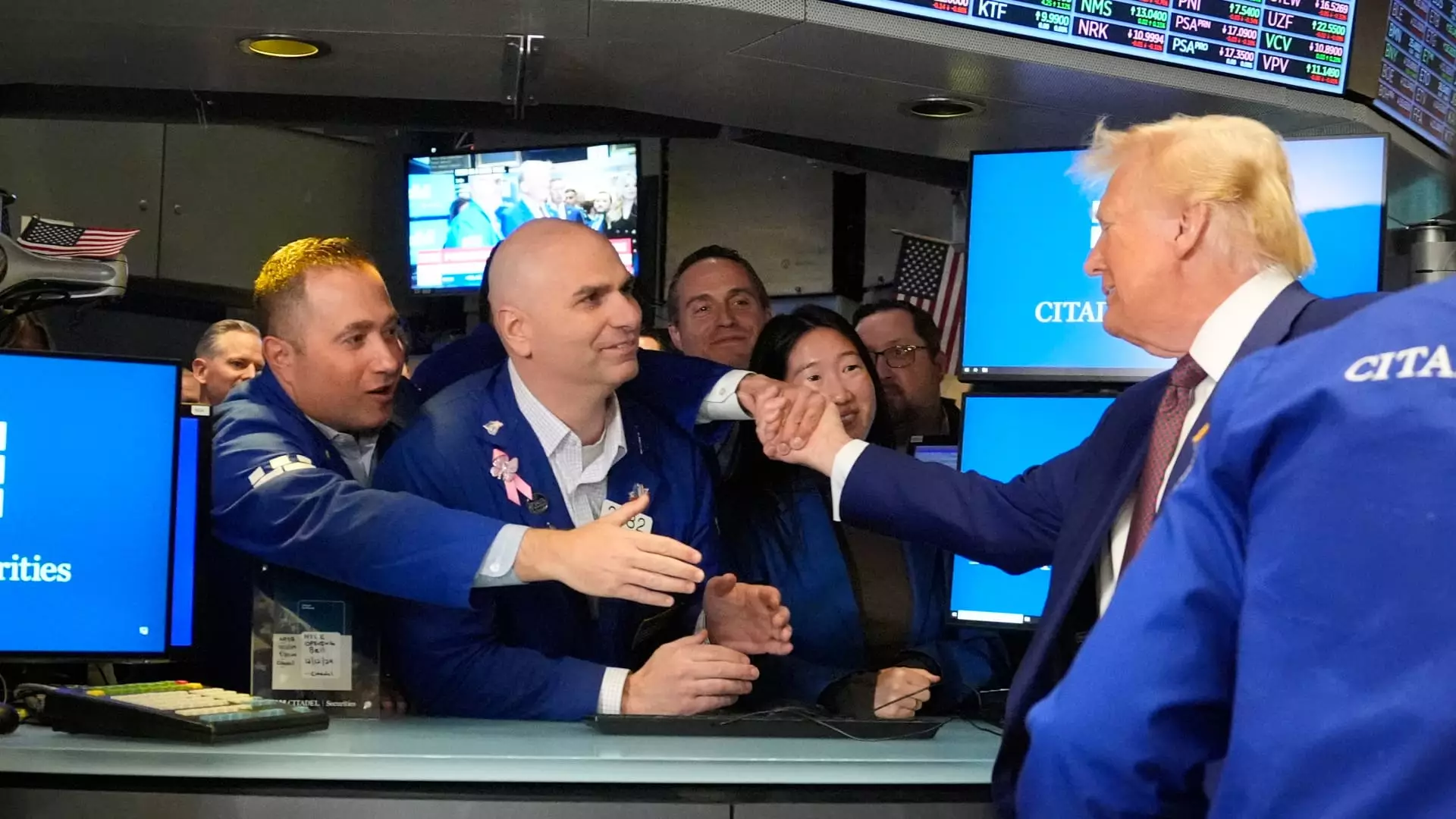In the high-stakes arena of the New York Stock Exchange, the ringing of the opening bell carries significant weight. On Thursday, President-elect Donald Trump’s appearance at this iconic event was marked by cautious optimism but also a notable hesitation to explicitly encourage investors to increase their stock portfolios. This playful yet prudent distancing from immediate investment advice illustrates Trump’s awareness of the volatility and unpredictability that often accompanies stock market fluctuations. In his conversation with CNBC’s Jim Cramer, Trump highlighted the potential risks associated with market speculation, stating, “I don’t want to get into a situation where they do and we have a dip or something…”
During his initial term, Trump utilized the stock market as a key indicator of economic success, with the S&P 500 witnessing a substantial rise of nearly 68%. This impressive figure can be attributed to several factors, including the corporate tax cuts passed during his administration and favorable monetary policy from the Federal Reserve, which maintained historically low interest rates. These elements acted in concert to fuel both investor confidence and overall market growth. However, one must ponder whether such growth was truly sustainable or if it was a byproduct of temporary fiscal maneuvers and external economic conditions.
On the floor of the exchange, Trump reiterated his ambition to lower taxes even further, suggesting a proactive approach to stimulate economic growth. His emphasis on domestic production as a condition for tax incentives – proposing a potential reduction from 21% to 15% for companies manufacturing in the U.S. – reflects a strategy aimed at bolstering the American economy. Nevertheless, this raises questions about the broader impacts of such policies on market dynamics and corporate behavior, especially as businesses navigate the challenges of globalization and competition.
Prominent figures in the financial world, including Goldman Sachs’ David Solomon and Pershing Square Capital’s Bill Ackman, were present alongside Trump at this ceremonial occasion. Ackman’s comments echoed a common belief among investors: the correlation between a thriving business environment, rising stock prices, and increased job opportunities. However, while Ackman’s assessment promotes a bullish outlook on the market, it is critical to approach such enthusiasm with realism. The underlying economic architecture must be robust enough to support sustained growth, rather than reliant on transient tax cuts or regulatory rollbacks.
While President-elect Trump’s opening remarks at the NYSE reflected a positive long-term vision for the U.S. economy, his reluctance to incite immediate speculative investment reflects a grounded awareness of the complexities within the financial landscape. Investors would benefit from maintaining a balanced perspective, recognizing both the opportunities and the inherent risks that define the stock market. As Trump prepares to take office, the dance between optimism and caution will be a critical narrative in shaping the nation’s economic future.

